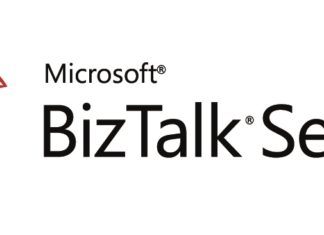BizTalk Server Single Sign On – Get mapped credential by code
This is my second post about using single sign on in Biztalk Server.
In this post i will show how to access mapped credentials by code.
First create a new affiliate...
BizTalk Server Single Sign On Configuration
This is my first post (in a total of four) about using SSO on BizTalk Server.
In this post i will show how to config an 1 on 1 credential...
BizTalk 2013 RTM and Azure IaaS Support
A few days ago I attended the Oporto BizTalk Innovation Day with my colleagues Pedro Vala and Tiago Oliveira. Steef-Jan’s session on cloud based adapters was interesting (although part...
BizTalk Server 2010 R2 TAP
The TAP for the next version of BizTalk, strangely pre-named “2010 R2” (instead of 2013) is open for nominations here. Of the list of new features, I am especially...
BizTalk 2010 R2
Steef-Jan has a great post about the next release of BizTalk Server in his blog. It seems to be mostly a platform upgrade, but the improvements in the area...
BizTalk 2010 R2 announced
Last week Microsoft announced the next release of BizTalk Server, for now called 2010 R2. Charles Young already wrote an overview of the features and product positioning, but I...
WPC2011 and the Future of BizTalk
Following Tony Meleg’s presentation at Microsoft World Partner Conference, there’s a lot of discussion going on about the future of BizTalk Server. The following is a link to some...
Instrumentation Best Practices for High Performance BizTalk Solutions + BizTalk Software Factory for BizTalk...
This one slipped me last year. A Microsoft whitepaper about Instrumentation Best Practices for High Performance BizTalk solutions. A reminder of the impact of trace and debug on BizTalk...
Editing .ODX Files / Regenerate Orchestration Code
Everybody with some experience with BizTalk Server knows that sometimes the ODX files get garbled and have to be fixed manually. I’ve had situations where the compilation of an...
When are Instance Subscriptions created, after all?
I stumbled with a situation where a Main orchestration calls a sub-orchestration, and this sub-orchestration sends back to Main a new message, using Direct Binding. The non-obvious behavior here...


![[FIX] BizTalk Server 2010, 2013, 2013 R2 & 2016 errors “Class not registered (WinMgmt)” or “Access denied”](https://blogit.create.pt/wp-content/uploads/2018/07/access-black-and-white-blur-270514-218x150.jpg)













![[FIX] BizTalk Server 2010, 2013, 2013 R2 & 2016 errors “Class not registered (WinMgmt)” or “Access denied”](https://blogit.create.pt/wp-content/uploads/2018/07/access-black-and-white-blur-270514-534x462.jpg)
